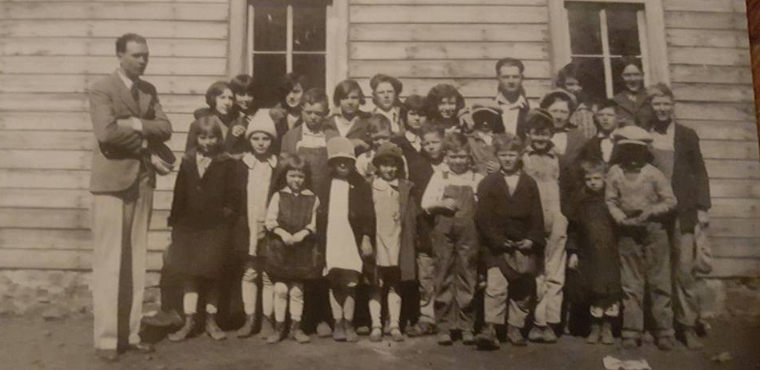For many of us born before the turn of the century, our earliest memories center on the old school buildings that dominated the surrounding small communities. Often the buildings were two and three stories tall with basements, fire escapes, and imposing brick exteriors. Inside, the halls were dark hardwood with large doors leading to classrooms crowded with wooden desks.
Thinking back, we remember how hot it was on summer days. We remember the smell of layers of wax, chalk, and right before lunch, the wonderful odor of cooking yeast rolls.
Outside in the playground, we found swings mounted on great iron shafts, teeter totters that we constantly bounced each other from, and merry-go-rounds that constantly left us with skinned legs and bruised knees. I remember David Rhineheart trying to jump to many rungs on the monkey bars and breaking an arm. Wonderful fun equipment that would end teachers and administrators in courts being sued today.
In the sixties, boys still played marbles and tops (often for keeps), and girls played hop-scotch in the required dresses which were the code of the day. Each room had a library of books and teachers like Mrs. Looney encouraged us to read by starting a book, stopping at an exciting point, and telling us if we wanted the remainder of the story, we could read it ourselves.
At one point, the state had 1589 school districts, one in about every populated section. There were 424 in the state in 1948, the year that the state began enforcing consolidation. Seventy-one of those districts contained less than 100 students. Prior to that date, we had schools at Shoal Creek, Ione, Sugar Groove, Branch, and Mount Salem. Older citizens still recall stories of those times and the teachers who educated them. Many of the old buildings still stand as testament to that time. Today, districts are required 350 total students or consolidation.
Many of the early schools educated only grades one through eight; kindergarten was a thought way in the future. Older students wanting more education went to Academies. Two of the top academies in the state were found in Booneville and Paris. Students attended those and paid $1.50 to $3 per month to attend. Room and board was about $8 a month and students could work that off by cutting wood or trade it off in farm goods.
Schools progressed, became larger, and converted to the modern air conditioning. Books have become computers, football fields covered in astro-turf and girls can wear pants and even shorts to school.
Memories of those days linger, each of us with our own special memories of classes, laughter, and friends.














